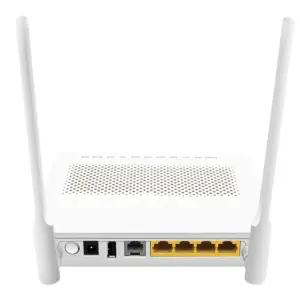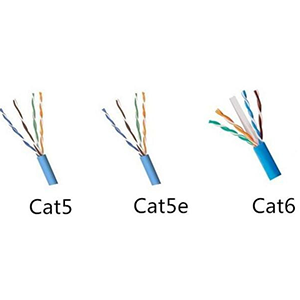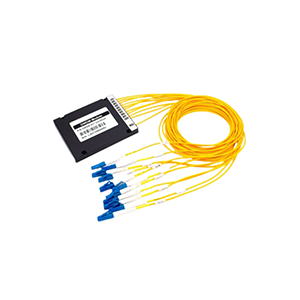Transmission distance is a key indicator in fiber optic communication systems. This article will explore how to use EDFA (Erbium-Doped Fiber Amplifier) to extend the fiber optic transmission distance. We will first analyze the factors such as attenuation and dispersion that affect the fiber optic transmission distance, and explain that conventional methods cannot meet the needs of long-distance transmission. Next, we will define the working principle of EDFA and introduce its main components and key technical indicators.
After that, we will focus on the key technologies for using EDFA to extend the fiber optic transmission distance, including amplification function, noise characteristics, output power, and wavelength selection. We will explain how EDFA compensates for fiber optic transmission loss through optical amplification, how to reduce noise and improve transmission quality, how to expand the transmission range by increasing output power, and the impact of wavelength selection on transmission distance. Finally, we will provide key considerations for selecting and deploying EDFA and introduce the key points of maintenance and management during the use of EDFA.
Limiting factors of optical fiber transmission distance
Let me introduce you in detail the main factors that limit optical fiber transmission distance:
Optical fiber attenuation:
- Optical signals are subject to inherent absorption and scattering losses in optical fibers
- This attenuation will continue to accumulate as the transmission distance increases
- The common single-mode optical fiber attenuation coefficient is about 0.2-0.3 dB/km
Dispersion:
- Different wavelengths of optical signals in optical fiber have different propagation speeds
- It will cause the optical pulse to gradually become wider, causing inter-symbol interference
- Dispersion mainly includes two types: dispersion dispersion and dispersion dispersion
Reduction of signal-to-noise ratio:
- As the transmission distance increases, the signal power gradually decreases
- And the noise power will accumulate and increase
- This will cause the signal-to-noise ratio to deteriorate and increase the bit error rate
Power budget:
- To achieve reliable transmission, it is necessary to ensure that the power at the receiving end is sufficient
- But fiber attenuation will gradually reduce the power at the transmitting end
- It is necessary to accurately budget and control the link power
In summary, factors such as the inherent loss, dispersion effect and power budget of optical fiber will severely limit the transmission distance of optical fiber. For some long-distance applications, conventional optical fiber transmission methods can no longer meet the requirements.
What is EDFA?
EDFA stands for Erbium-Doped Fiber Amplifier, which is a key device used to overcome the distance limitation of optical fiber transmission. Let me introduce its working principle and main technical indicators in detail:
Working principle:
- EDFA uses optical fiber doped with erbium ions as gain medium
- Through the injection of external pump light, erbium ions are stimulated to transition from the ground state to a higher energy level
- When the signal light passes through this section of erbium-doped optical fiber, the stimulated emission of erbium ions can be used to amplify the signal light
- This can overcome the attenuation during optical fiber transmission and achieve long-distance high-power optical signal amplification and transmission
Main components:
- Erbium-doped fiber segment: as a gain medium, usually 10-20 meters long
- Optical pump source: provides high-power pump light, usually a semiconductor laser
- Wavelength division multiplexer (WDM): couples pump light and signal light into erbium-doped fiber
- Optical isolator: prevents interference from reverse light
Key technical indicators:
- Gain: EDFA The gain is usually around 20-30dB
- Noise coefficient: usually less than 5dB, ensuring a good signal-to-noise ratio
- Saturated output power: usually around 10-20dBm
- Working wavelength: mainly in the C band around 1550nm
EDFA plays a key role in long-distance optical fiber communications with its excellent optical amplification performance, greatly improving the reliability and performance of optical fiber transmission.
Use EDFA to extend the distance of optical fiber transmission
Let me introduce you in detail the relevant technical features of using EDFA to extend the distance of optical fiber transmission:
Amplification function:
- EDFA can effectively compensate for the power loss during optical fiber transmission
- By amplifying the signal light, the power level at the receiving end can be increased
- This greatly increases the feasible distance of optical fiber transmission, usually up to 80-100 kilometers
Noise characteristics:
- EDFA itself will introduce a certain amount of noise, which is manifested as noise coefficient
- A lower noise coefficient is conducive to maintaining a higher signal-to-noise ratio
- By optimizing EDFA Design and working parameters can reduce the noise figure to 4-5dB
Output power:
- The output power level of EDFA will directly affect the transmission distance
- By increasing the output power of EDFA, the transmission range can be further expanded
- The output power of commercial EDFA is generally around 10-20dBm
Wavelength selection:
- The working wavelength of EDFA is mainly concentrated in the C band of 1530-1565nm
- In this band, EDFA can provide the highest optical amplification gain
- In other bands, the amplification performance of EDFA will be greatly reduced
In summary, EDFA By providing high gain, low noise, high power output and other characteristics, it effectively solves the problem of limited optical fiber transmission distance, making long-distance high-speed optical transmission possible. Reasonable selection of EDFA’s key technical parameters is crucial to expanding the transmission range.
EDFA precautions in practical applications
Let me summarize some key points to pay attention to when using EDFA in practical applications:
EDFA selection considerations:
(1) Gain level
- Choose appropriate gain according to the optical fiber transmission loss to be compensated
- Usually a gain of more than 30dB can meet most long-distance transmission requirements
(2) Noise performance
- Select EDFA with a low noise factor as much as possible
- To ensure that the signal quality at the receiving end meets the requirements
(3) Power output
- Select the appropriate output power level according to the transmission distance
- Too low output power will limit the transmission range, too high output power may damage the device
(4) Working wavelength
- Select the working wavelength that matches the fiber transmission window
- Usually C band around 1550nm
EDFA use and maintenance precautions:
(1) Optical path connection
- Ensure the cleanliness of the optical fiber interface to prevent loss caused by pollution
- Ensure that the optical connection is firm and reliable to avoid small breakpoints
(2) Environmental conditions
- Ensure that the temperature, humidity, vibration, etc. of the EDFA working environment are within the allowable range
- Avoid excessive heat accumulation or external interference
(3) Power monitoring
- Regularly check the input and output power levels of the EDFA
- Promptly detect and deal with possible power imbalances
(4) Fault diagnosis
- Establish a complete fault monitoring and alarm mechanism
- Promptly detect and locate possible EDFA faults
In summary, in the selection and actual use of EDFA, it is necessary to fully consider its key technical indicators and take effective installation and maintenance measures to ensure that EDFA can reliably support long-distance optical transmission.
Summary
EDFA technology plays a key role in expanding the transmission distance of optical fiber communication systems. Our company has long been focusing on the research and development and production of optical communication equipment and its core components, and has rich industry experience. The EDFA products we provide have reached the industry-leading level in terms of amplification function, noise characteristics, output power and wavelength characteristics, and can meet your demanding needs for long-distance high-speed optical transmission.
Whether you need to deploy EDFA in trunk transmission, access network, or other fields, we can provide you with customized solutions. At the same time, our professional team will provide you with a full range of technical support, including on-site surveys, solution design, and equipment installation and maintenance. Contact us now to learn more about the application of EDFA in optical fiber communication.
Erbium-Doped Fiber Amplifier FAQ
An EDFA is an optical amplifier that uses a section of erbium-doped optical fiber to amplify the strength of an optical signal, enabling it to be transmitted over longer distances.
EDFAs overcome the natural attenuation of optical signals in fiber optic cables by optically amplifying the signals, allowing them to be transmitted over much greater distances without degradation.
An EDFA system typically includes the erbium-doped fiber, a pump laser to excite the erbium atoms, and various optical components such as wavelength-division multiplexers and isolators.
EDFAs are widely used in long-haul telecommunications networks, dense wavelength-division multiplexing (DWDM) systems, and other fiber optic applications that require extended transmission distances.
EDFAs are optimized to operate in the 1550nm wavelength region, where silica-based optical fibers have low attenuation, and they can provide gain ranging from 10dB to 30dB or more.
Key factors in choosing an EDFA include the required gain, input and output power levels, noise figure, and compatibility with the existing fiber optic infrastructure.
Proper installation of EDFAs involves considerations such as optical power budgets, pump laser requirements, thermal management, and integration with the existing network components.
Maintenance tasks may include monitoring pump laser performance, checking optical power levels, and verifying the overall system health through various diagnostic tools and procedures.
While EDFAs can significantly enhance the reach of fiber optic networks, they do require additional capital and operating costs, as well as power consumption for the pump lasers and associated electronics.
Ongoing advancements include the development of higher-power, more efficient, and more compact EDFA designs, as well as the integration of EDFAs with new network architectures and optical transmission technologies.




